Gin's tomato variety
All gardeners are looking for varieties of tomatoes that would give a large harvest, were resistant to adverse factors and diseases. One of the best varieties that meet these criteria is the Gina tomato. This is one of the achievements of Dutch breeders. He received recognition from many gardeners in Europe and Asia. It is not a hybrid and every gardener can harvest their seeds for planting next year.

Photo: Anatoly Shevchuk, Bershad, Ukraine.
Description of Gin's tomato
The variety is medium early, the first fruits ripen 110-120 days after germination. The bush is determinate (undersized), spreading, growth is limited to a height of 50-60 cm. It is not standard, but rather strong. Despite the strength of the bush, the plant still needs to be tied up, because it may not withstand a bountiful harvest. Fruits are slightly ribbed, rounded, slightly flattened. They are quite large, their weight is 200-250 g (individual fruits up to 300 g). The color is bright red. The dry matter mass reaches 5%. The pulp is fleshy, juicy and aromatic, the taste is sweet with a slight sourness. The skin is strong, so the fruits are well preserved and transported. Plucked fruits retain their commercial qualities for a long time. And if ripe tomatoes are rolled up in sterile jars and placed in a cold place where the sun's rays do not fall (refrigerator or basement), they will retain their shape and wonderful taste for up to three months. Fruiting in the variety is stretched. Tomatoes grow in brushes, up to 5 in one brush. The first brush appears after the eighth to ninth leaf. And the next one - two sheets. The variety is very productive, you can get 2-3 kg of tomatoes from each bush, and 7-10 kg per sq. meters. Gina can be grown both outdoors and in a greenhouse. When grown in a greenhouse, the height of the bush can reach 80 cm and the yield will be even greater. The purpose of the fruit is universal. They are delicious fresh, they are used to make juices, ketchups, tomato pastes. Thanks to their strong skin, they can be preserved.
The great advantage of the variety is its unpretentiousness, a good harvest can be obtained in any weather conditions, it does not tolerate only sudden changes in temperature. There is no need to grow the bushes, the plant grows three to four stems and it regulates the load itself. Gina has such a characteristic that if you pluck out all the side shoots below the first brush, the tomatoes will grow larger and you can get an earlier harvest. The bushes are resistant to late blight, root rot, fusarium and other diseases. If you systematically carry out preventive treatments, they practically do not get sick.
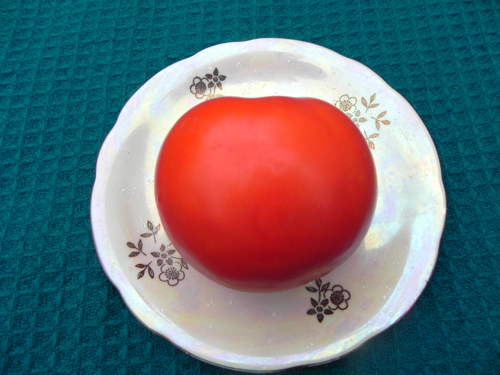
There is also Gina TST. These are different varieties. Gina TST was bred by Russian breeders, its fruits are orange-red, weighing 150 g, and it is early ripening. The skin of the fruit is thin and is not suitable for storage and canning.
Growing
In the southern regions, this tomato can be grown outdoors, without shelter. You don't even need to tie up the plants, while the bushes lie on the ground and protect the plant roots from drying out. In more northern regions, it is grown in greenhouses. Tomatoes can be grown both through seedlings and by sowing seeds directly into the ground, it depends on the climatic zone of cultivation.
In seedless cultivation, the seeds are soaked, and when warm weather sets in, they are sown in the ground. To do this, shallow holes are made, a little ash is introduced into the soil and the seeds are planted to a depth of 1-2 cm. Before the emergence of seedlings, to protect the soil from drying out, the area with the planted seeds is covered with a film or agrofibre.
Since Gina's fruiting is stretched out and the bushes give the last harvest late, they need to be planted in the ground to get the maximum yield early. Therefore, for more northern regions, the seedling method is more preferable than sowing seeds in the ground. Sow seeds for seedlings at the end of March. Seedlings are transplanted into open ground when the soil warms up to 15 degrees and the danger of cold snaps passes.3-4 plants are planted per sq. meter.
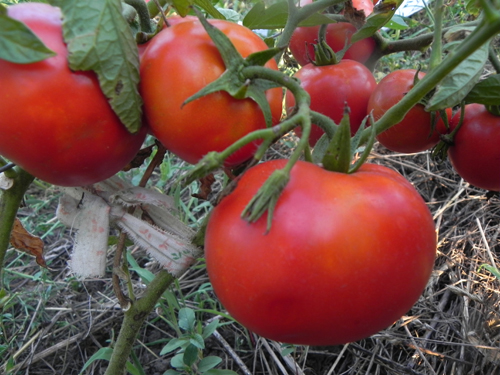
Gina doesn't like shadows. Therefore, when landing, you need to choose a well-lit place. The lower leaves on the bushes must be cut off to a height of 10 cm. When a large deciduous mass grows, it is also necessary to cut off the leaves that shade the fruits. Then ripening will come earlier and the harvest will be larger. The bushes are spreading, so they cannot be planted thickened. The distance between bushes in a row should be at least 50 cm, and between rows at least 60 cm.
Fertilizing and watering plants
When planting seedlings, it is useful to add phosphorus-potassium fertilizer to each hole (1 teaspoon of superphosphate and wood ash). Ash acts here as a source of trace elements (primarily potassium) and protection against certain diseases. Nitrogen fertilizers are not recommended for planting as they can reduce plant immunity. Further feeding is carried out in the same way as for all varieties of tomatoes. During flowering, many ovaries are tied at Gina, and so that there is no shedding, the plants need to be treated with boric acid. 1 g of boric acid is dissolved in 1 liter of hot water (but not boiling water). After the solution has completely cooled down, the plants are sprayed with a spray gun in the morning or evening hours. The approximate consumption rate is 1 liter of solution per 10 sq. meters.
Irrigation is very important for Gin's tomato. With excessively moist soil, the sugar content of the fruits decreases, they become watery, and the likelihood of fungal diseases increases. With drought and drying out of the soil, the ovary may fall off. Therefore, it is necessary to water the plants abundantly, but not often, on hot summer days about once a week. Watering is carried out in the evening, and on a cloudy day throughout the day. When watering, water should not fall on the leaves, this can provoke diseases. During flowering and during the period of fruit formation, watering should be more abundant.
Protection against diseases and pests
The variety is resistant to disease, but disease prevention is recommended, and it should be started within two weeks after planting seedlings in open ground. Diseases are easier to prevent than to cure, so treatments should be done every two weeks. How to process - each gardener decides for himself. The most reliable are chemical preparations - containing copper (copper sulfate, Bordeaux mixture
Gina is susceptible to attack by pests, therefore, special attention should be paid to protecting it from aphids, bear, larvae of the May and Colorado potato beetle, wireworm. To combat them, folk methods are used (infusion of onion husks, wormwood, garlic). If folk remedies do not help, chemical insecticides are used. From aphids, plants are sprayed with the preparations Confidor, Ratibor, Decis-profi. They protect from the larvae of the May beetle and wireworm by treatment with drugs Bazudin, Antichrushch. From the Colorado potato beetle, Decis, Confidor, Corado are used. Preparations in granules Rembek Granula and Medvetox will help to protect against the bear. In order not to accidentally poison animals and birds, the granules should not be laid out on the surface, but buried in the ground near the plants.

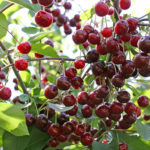

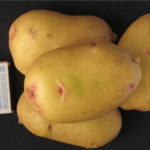
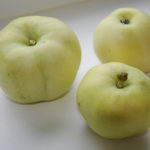
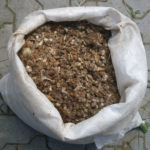



I always dreamed of having such tomatoes that do not need to be pinned. Still, this is a very tedious and painstaking job.We usually combine it with tying, which is also time-consuming. And so that the bushes are not high, otherwise you go to pick a few pieces for a salad, and you crawl out of the tomato thickets all green. It's good that Gina appeared, she meets all these requirements. Plus unpretentiousness and excellent productivity, large and delicious fruits, where there is more fragrant pulp than juice and seeds. There are a lot of leaves on this variety, but I almost never cut them off. Our sun is so hot that burns appear on the tomatoes. The same happens if the fruits are not in the grass, but on the hot sand. Therefore, only a garter without alternatives.
She always treated undersized varieties with distrust - she could not believe that such bushes could grow a full harvest of large tomatoes. I realized my mistake when I grew this one - the seeds came to me in the form of a gift (don't throw it away), I sowed it. The bushes did not grow tall - no higher than 60 cm, strong, in three stems. The tomatoes began to tie low, and continued to form clusters every 2 leaves - soon the bushes were completely covered with fruits. They turned out to be large enough for such a baby - up to 200 grams, even, of a beautiful color, the pulp is somewhat dense, but tasty, and the density helps the fruit to be stored for a long time and not to deteriorate. In general, I liked the tomato, but I still think about rationing, since not the entire crop had time to ripen before the frost began.
I had the opportunity to get acquainted with this tomato, well, I liked it very much!
I have been planting the Gin variety for about 10 years. I'm very happy with it! The tomato is responsive to care. Every year we are with tomatoes! Beautiful, tasty, strong fruits. On the brushes grows 5 - 7 pieces!